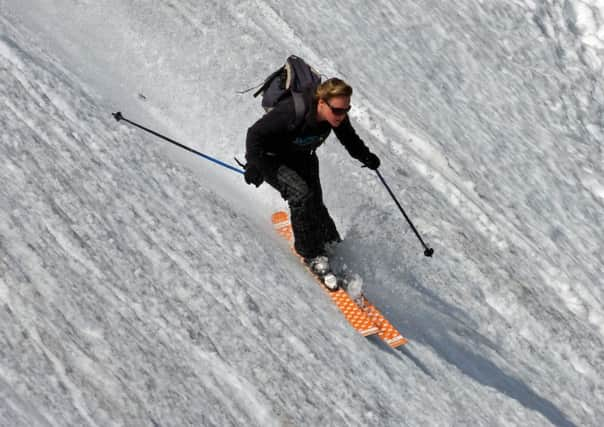Roger Cox: Shuttered slopes are a crying shame


At time of writing the webcams up at Glencoe show the Main Basin and Spring Run still looking tantalisingly skiable, and there will more than likely be good cover there come 21 June, when the Cliffhanger Chairlift will run in the morning for those wishing to partake in the traditional Midsummer Slide.
Then again, as all the ski resorts have now officially closed, and as ski-scotland has released its official figures for skier days, I suppose now is as good a time as any to look back on the commercial side of the season, even if from a ski touring perspective there’s plenty more fun to be had.
Advertisement
Hide AdAdvertisement
Hide AdThe total number of skier days at the five ski centres for the 2013/14 season was 235,303. (A “skier day” is exactly what it sounds like – a single skier skiing for a single day – so a motivated season pass holder could conceivably contribute 20 or 30 days to the total.) In comparison to recent years, that’s not a disastrous figure, but it’s not a fantastic one either. Since the game-changing 2009/10 season, which saw a total of 374,789 skier days – mana from heaven after seven grim, barren, sub-200,000 years – business has remained brisk, with figures of 289,995 in 2010/11 and 290,996 in 2012/13. Compared with those seasons, then, this year’s figure is a bit of a disappointment, although nowhere near as bad as the washout year of 2011/12, which only saw a measly total of 118,592 skier days.
What makes this year’s figure really disappointing, however, is that, in contrast to 2011/12, which was a poor snow year, this season has seen apocalyptic amounts of snowfall. On 30 January, the upper runs at Glencoe, CairnGorm and Nevis Range had snow depths of 285cm, 250cm and 200cm respectively, whereas Whistler in Canada had just 128cm, Courchevel in France had just 127cm and Kitzbuhel in Austria had just 125cm. The trouble was, even though Scotland’s ski centres were plastered in the white stuff, hardly anybody could get up there to enjoy it because the wind howled pretty much non-stop (or, certainly, pretty much every weekend) right through the winter.
In spite of the fact that CairnGorm opened for business as early as the second weekend of November and didn’t close until early May, the total number of skiable days at the five resorts was just 441 (an average of just 88 days each). As a spokesman for ski-scotland put it, “many ski area staff spent longer digging out chairlifts and tow huts than they did selling tickets and operating lifts”.
There’s nothing anybody can do about the wind – and as man-made climate change promises to bring us more in the way of extreme weather over the coming decades, party-pooping hurricanes seem likely to become more of a problem. But, in commercial terms, spring is the great under-utilised resource of Scottish skiing, and more could surely be done to persuade people to ski at the tail end of the season. After all, this is a time of year when the wind dies down, the sun comes out and the snow softens up, yet the resorts are often forced to shut down, not because of a lack of snow on the runs, but because of a lack of interest from the skiing public.
As already mentioned, the Main Basin and Spring Run at Glencoe are still skiable now, even though the lifts stopped running weeks ago. Similarly, by the middle of May, Nevis Range and CairnGorm were both closed, but there was still plenty of snow in the Goose Gully at Nevis and, at CairnGorm, it was still possible to make a thigh-burning, 1,600ft vertical descent from near the top of the hill all the way down to the bottom of the Ciste Gully.
Part of the problem is that, after a certain point in the year, the up-tracks that allow surface tows to operate have melted, so getting to the remaining runs requires a bit of hiking and the resorts can no longer claim to offer truly lift-served skiing. But today’s skiers are increasingly willing to earn their turns. Might there be a business case for offering cut-price lift passes for using very limited uplift – a sort of hybrid of resort skiing and ski touring – as a way of extending the season a little further? I have no idea. But would I take advantage of such a deal if it existed? Absolutely.